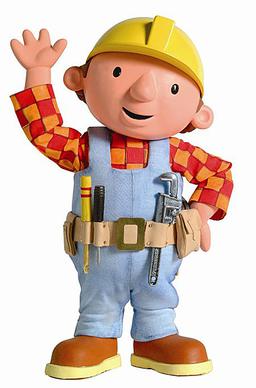Well it seems like ages ago since I posted.
It seems like ages ago since I started weighing the new pistons
I have a set of handy cheapo pocket scales that I bought at an electronics shop a few years back. It was a strange purchasing experience: I had gone into the shop asking for a set of electronic scales to weigh pistons. The chap was like "pistons?" - yeah "you know engine parts - pistons" was the response. He had a look on his face of "well that's the first time I've ever heard an excuse for buying pocket scales like that - most people use them for weighing drugs"...
...welcome to Holland!
Anyway - I digress. The scales are probably OK for most things that weigh under 1kg - give a 0.1 gram reading which makes them ideal for weighing most engine parts. Land Rover connecting rods, however are a bit too heavy for the scales so I couldn't weigh them as a whole piece.
This isn't a massive problem because "the old hot rodder trick" (as the Americans might say) is to split the measurement of the weight measured at the little end and the big end. This is usually done on seriously nice balance machines and much better scales than I have. The investment in either making my own "decent kit" or buying it is beyond my budget for the Land Rover...

(Image borrowed from internet - follow link in picture to source site if you must)
...so I did the next best thing:
IMPROVISED!
Hmmm
Well...
...not brilliant but hopefully a bit better than just slamming the new parts into the engine.
#########
So ears wot 'appened
Bit of OSB - one set of pocket scales - one DTI magnetic stand - one kitchen table


It was very tricky getting repeatable results.
The shaft on the DTI magnetic stand is a bit too small so the little end or the big end of the connecting rod could wander a little bit to the right or to the left resulting in a fluctuating measurement at the scales. In the end I placed each connecting rod "in the middle" as much as I could.
Professional bits of kit have nice swinging chains that stop this.
So it was apparent from the beginning that the best I was going to get out of this exercise was a rough idea of the connecting rod with the heaviest ends.
This actually is kind of what I want to achieve as I have no intention of shaving off little bits of metal to try and make each component "perfectly balanced" (this is what race engine builders do)
I wanted to avoid the "worst luck" combination of all of the heavy parts being assembled in one cylinder and all of the lightest parts going in another.
#######
Because the pistons fitted on the scales (just) they gave repeatable reliable results.
#######
So here's what I got from a bit of measuring =>

Please note I'm worried the most about reciprocating mass (as you do), so I'm only considering the estimated (well it was measured but unreliably measured) little end connecting rod weight in the final sums.
If I had been unlucky I reckon I could have chosen a combination that would have had a difference of 52 grams - I reckon now I've got a combination of parts that give a maximum difference of 16 grams.
So I now feel a little more confident that I have picked the best combination of parts - that I'm not prepared to modify (!) - to get the best similar reciprocating weight within the engine. If I'm really lucky my rebuilt engine won't be as rattly as some of the others!
It seems like ages ago since I started weighing the new pistons
I have a set of handy cheapo pocket scales that I bought at an electronics shop a few years back. It was a strange purchasing experience: I had gone into the shop asking for a set of electronic scales to weigh pistons. The chap was like "pistons?" - yeah "you know engine parts - pistons" was the response. He had a look on his face of "well that's the first time I've ever heard an excuse for buying pocket scales like that - most people use them for weighing drugs"...
...welcome to Holland!
Anyway - I digress. The scales are probably OK for most things that weigh under 1kg - give a 0.1 gram reading which makes them ideal for weighing most engine parts. Land Rover connecting rods, however are a bit too heavy for the scales so I couldn't weigh them as a whole piece.
This isn't a massive problem because "the old hot rodder trick" (as the Americans might say) is to split the measurement of the weight measured at the little end and the big end. This is usually done on seriously nice balance machines and much better scales than I have. The investment in either making my own "decent kit" or buying it is beyond my budget for the Land Rover...

(Image borrowed from internet - follow link in picture to source site if you must)
...so I did the next best thing:
IMPROVISED!
Hmmm
Well...
...not brilliant but hopefully a bit better than just slamming the new parts into the engine.
#########
So ears wot 'appened
Bit of OSB - one set of pocket scales - one DTI magnetic stand - one kitchen table
It was very tricky getting repeatable results.
The shaft on the DTI magnetic stand is a bit too small so the little end or the big end of the connecting rod could wander a little bit to the right or to the left resulting in a fluctuating measurement at the scales. In the end I placed each connecting rod "in the middle" as much as I could.
Professional bits of kit have nice swinging chains that stop this.
So it was apparent from the beginning that the best I was going to get out of this exercise was a rough idea of the connecting rod with the heaviest ends.
This actually is kind of what I want to achieve as I have no intention of shaving off little bits of metal to try and make each component "perfectly balanced" (this is what race engine builders do)
I wanted to avoid the "worst luck" combination of all of the heavy parts being assembled in one cylinder and all of the lightest parts going in another.
#######
Because the pistons fitted on the scales (just) they gave repeatable reliable results.
#######
So here's what I got from a bit of measuring =>
Please note I'm worried the most about reciprocating mass (as you do), so I'm only considering the estimated (well it was measured but unreliably measured) little end connecting rod weight in the final sums.
If I had been unlucky I reckon I could have chosen a combination that would have had a difference of 52 grams - I reckon now I've got a combination of parts that give a maximum difference of 16 grams.
So I now feel a little more confident that I have picked the best combination of parts - that I'm not prepared to modify (!) - to get the best similar reciprocating weight within the engine. If I'm really lucky my rebuilt engine won't be as rattly as some of the others!



